Abstract
The effective intracellular resistivity Ri of the ocular lens is a measure of the coupling between cells. Since degradation of coupling may accompany cataracts, measurements of Ri are of considerable interest. Experimental results show that the lens is a nonuniform syncytium in which Ri is much higher in the nuclear region than in the cortex. A theory describing the lens as a radially nonuniform spherical syncytium is proposed, solved, and described as a simple equivalent circuit. The impedance of the lens is measured with new circuitry which permits the accurate application and measurement of current and voltage over a wide bandwidth without arbitrary compensation of unstable capacitances. The fit of the nonuniform theory to experimental data is satisfactory and the parameters determined are consistent with theoretical assumptions. In the outer region (cortex) of the lens Ri = 2.4 k omega-cm, probably as a consequence of differences in coupling and cytoplasmic resistivity. The radial resistivity of the cortex is some five times the circumferential resistivity, demonstrating a marked anisotropy in the preparation, probably reflecting the anisotropy in the orientation of lens fibers and distribution of gap junctions. Current can flow in the circumferential direction without crossing from fiber to fiber; current can flow in the radial direction only by crossing from fiber to fiber.
Full text
PDF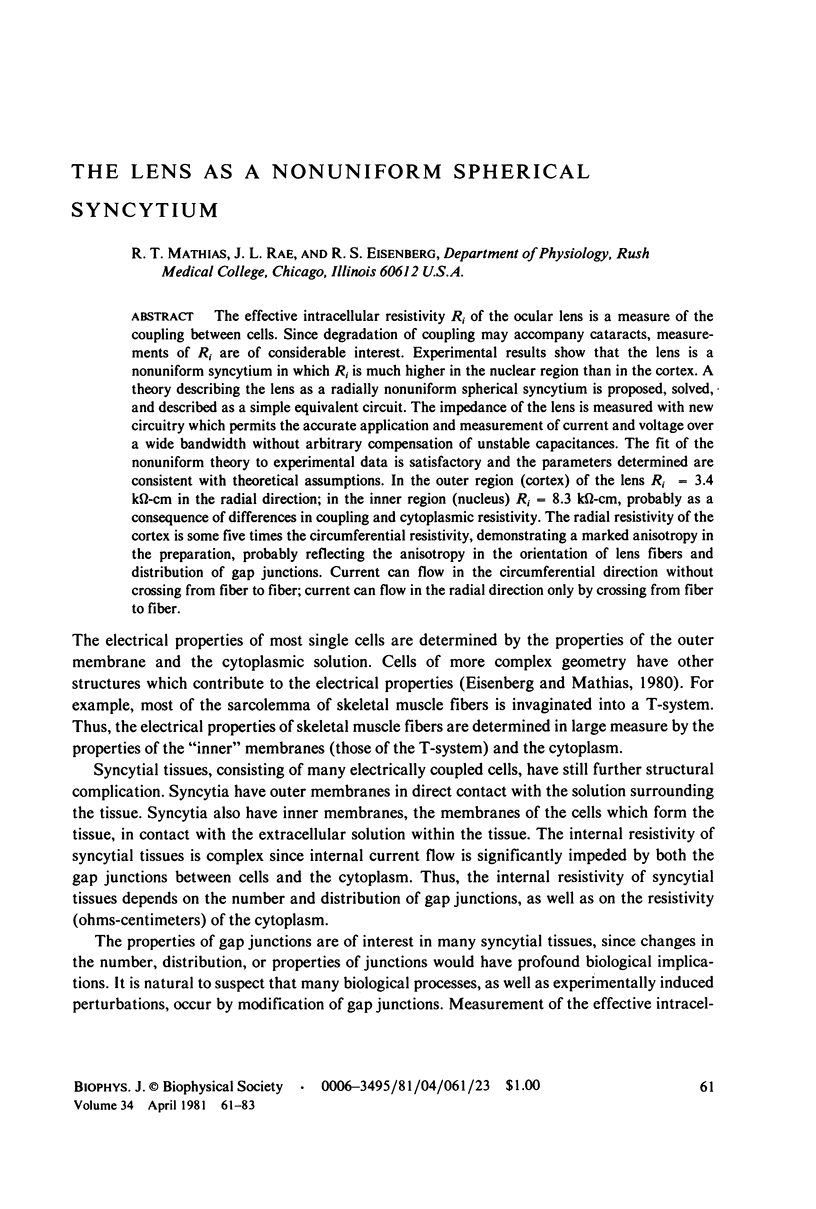
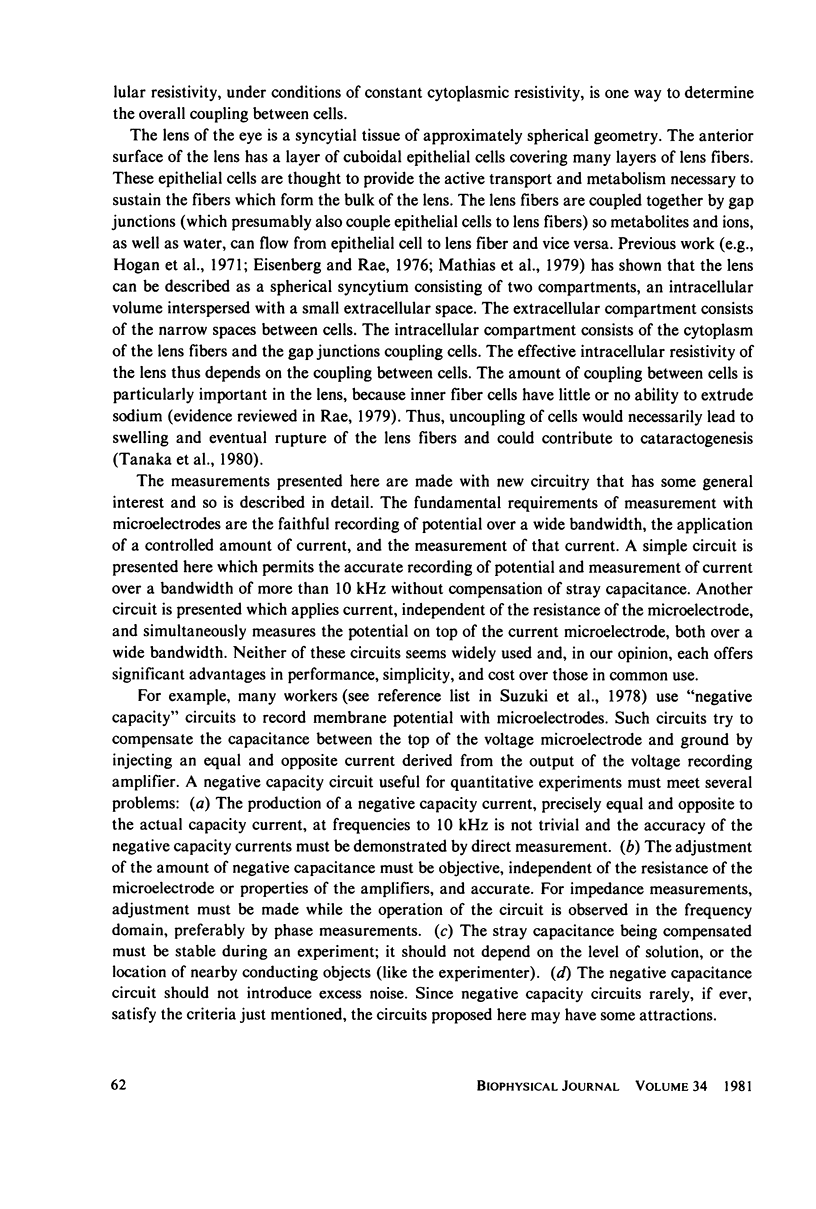
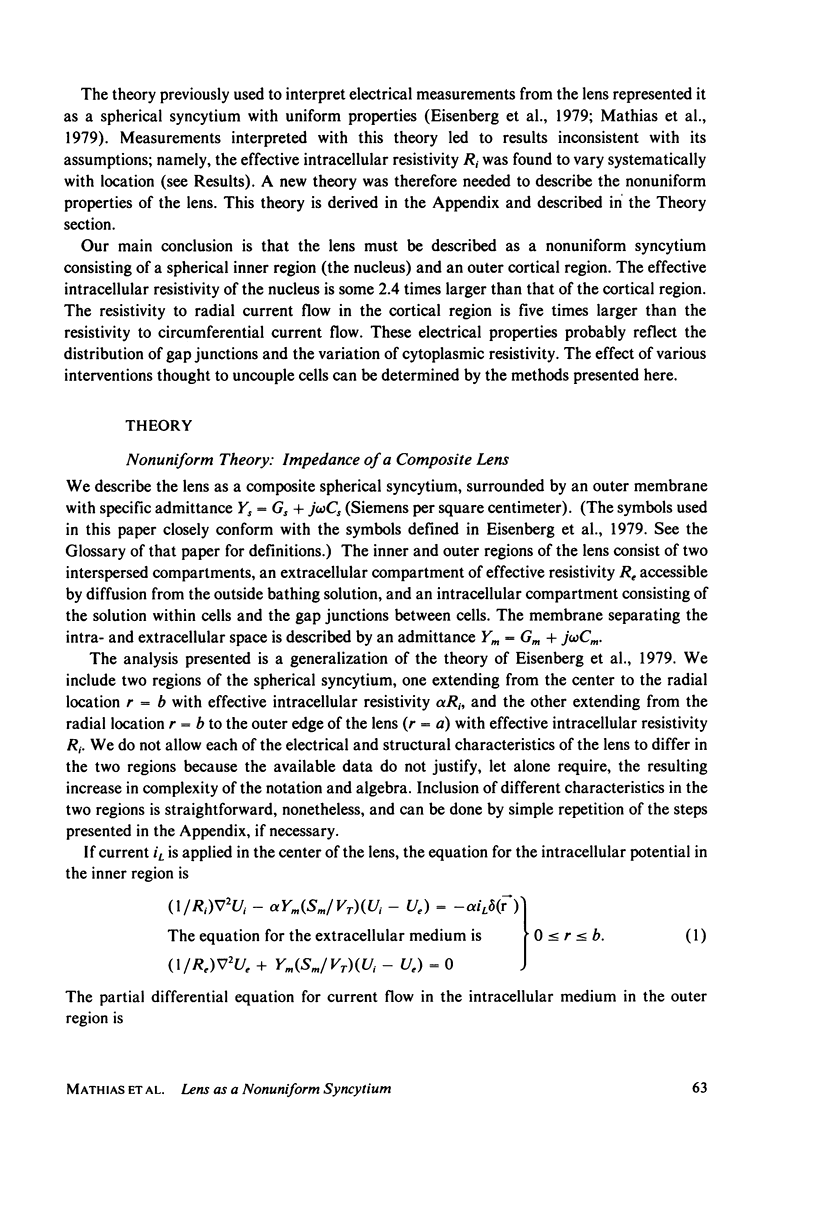
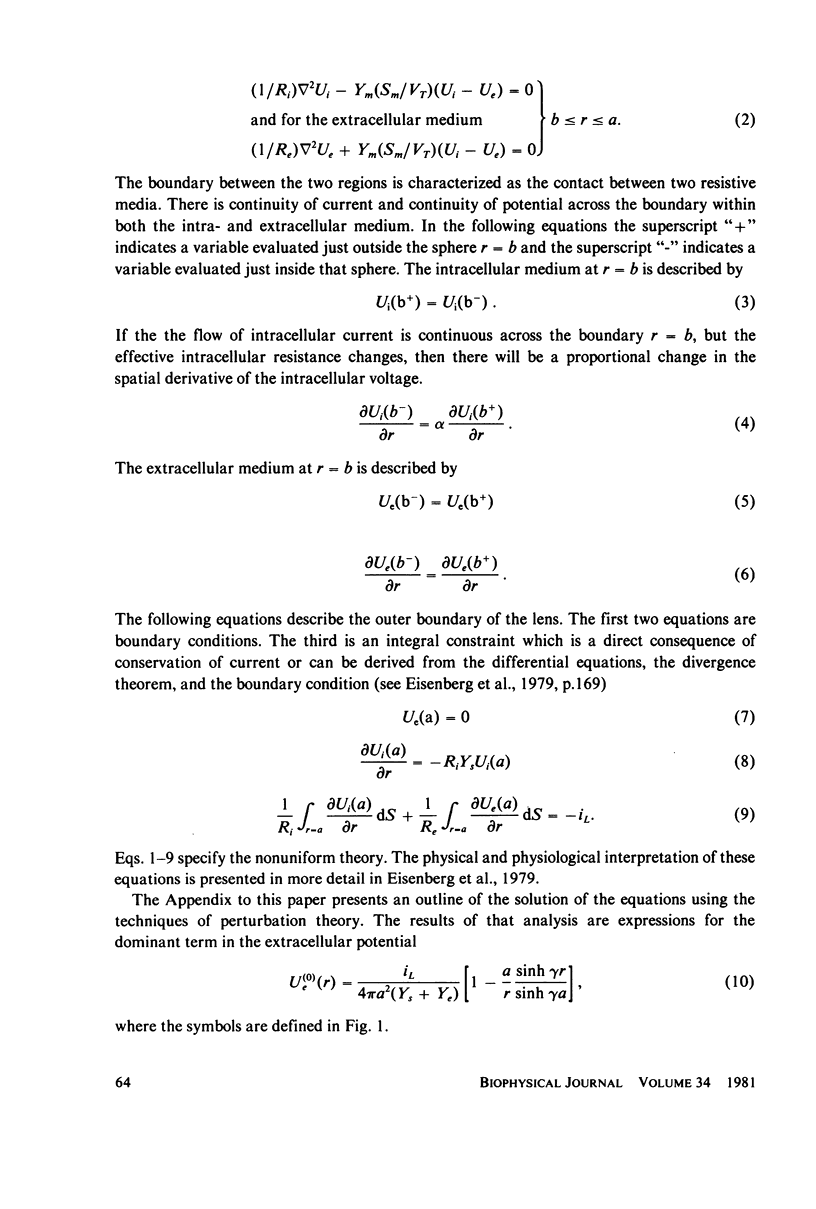
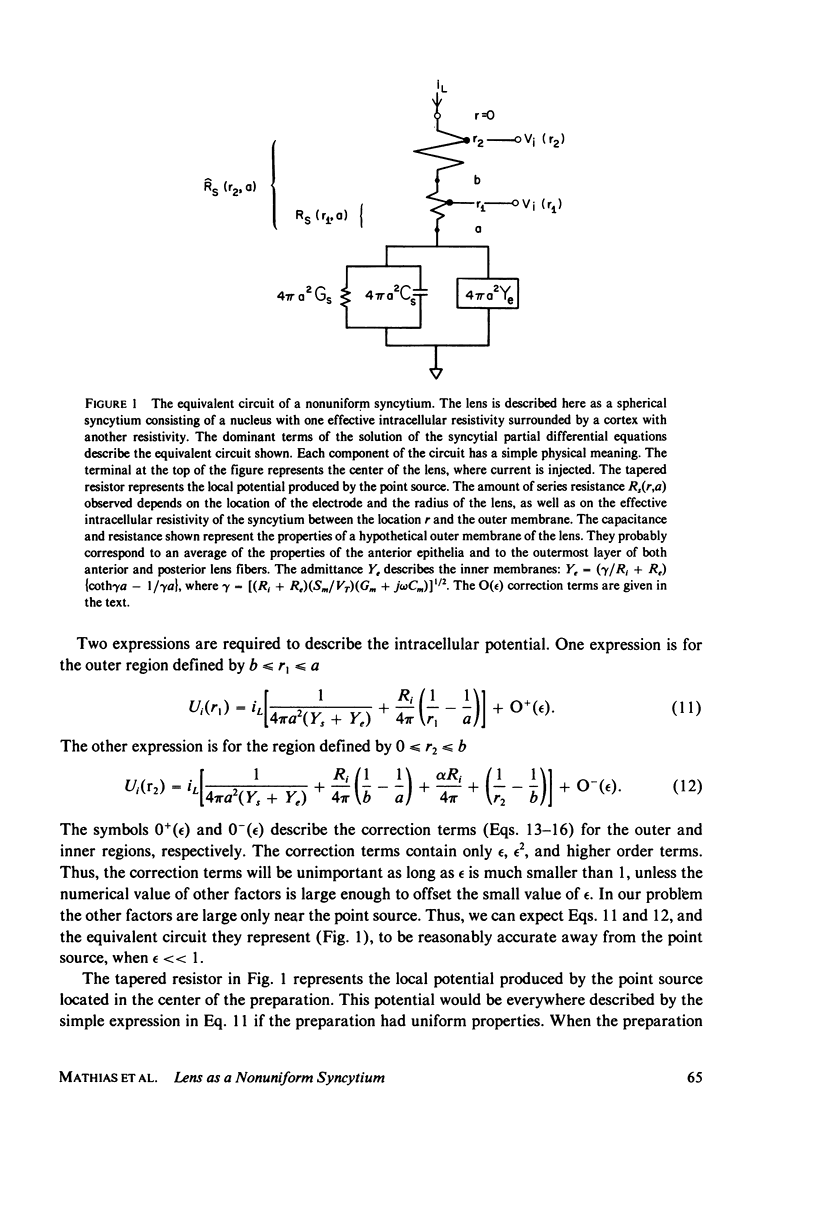
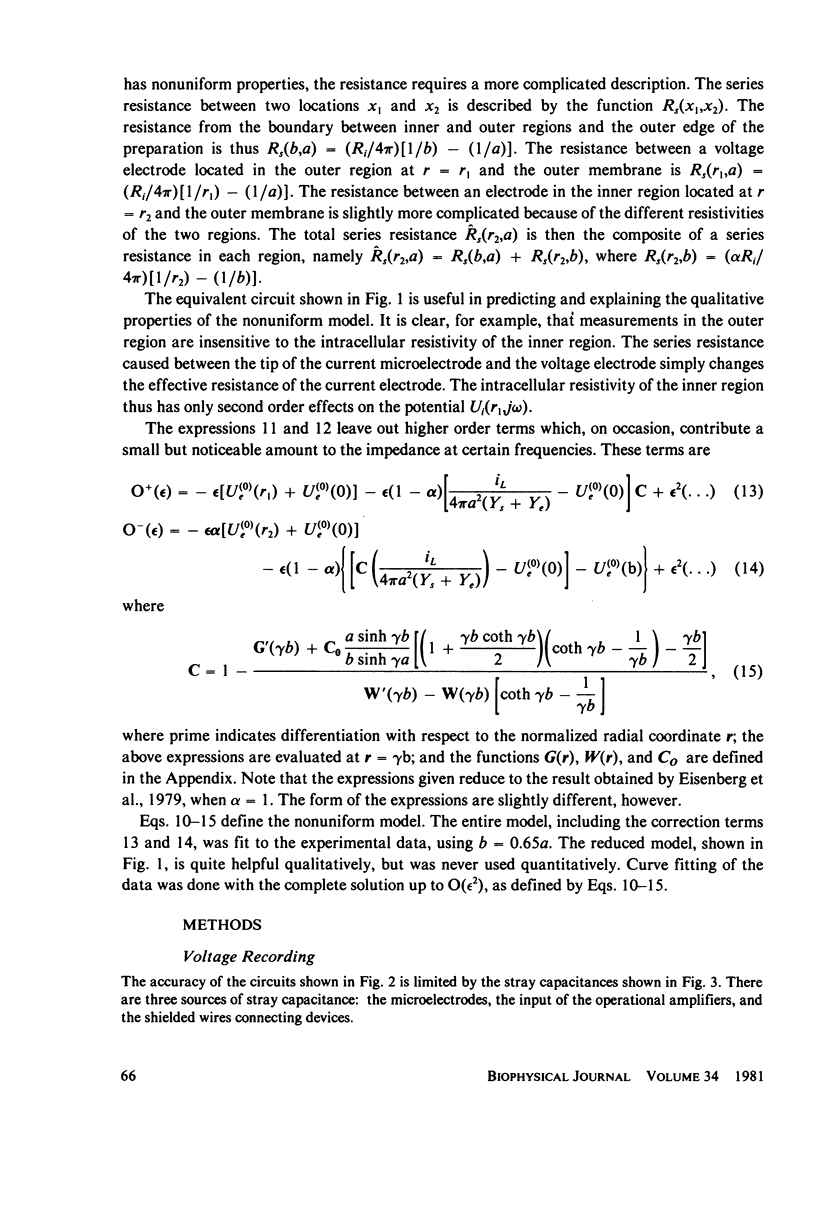
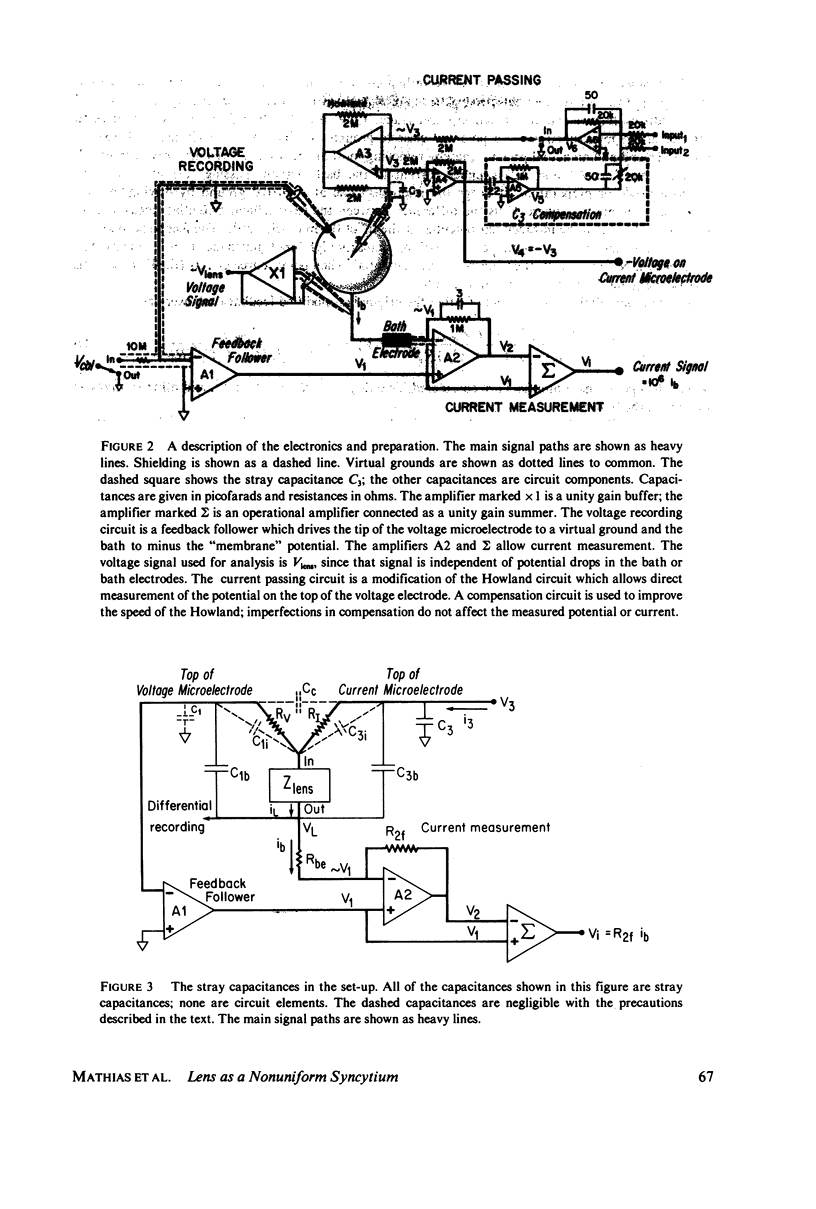
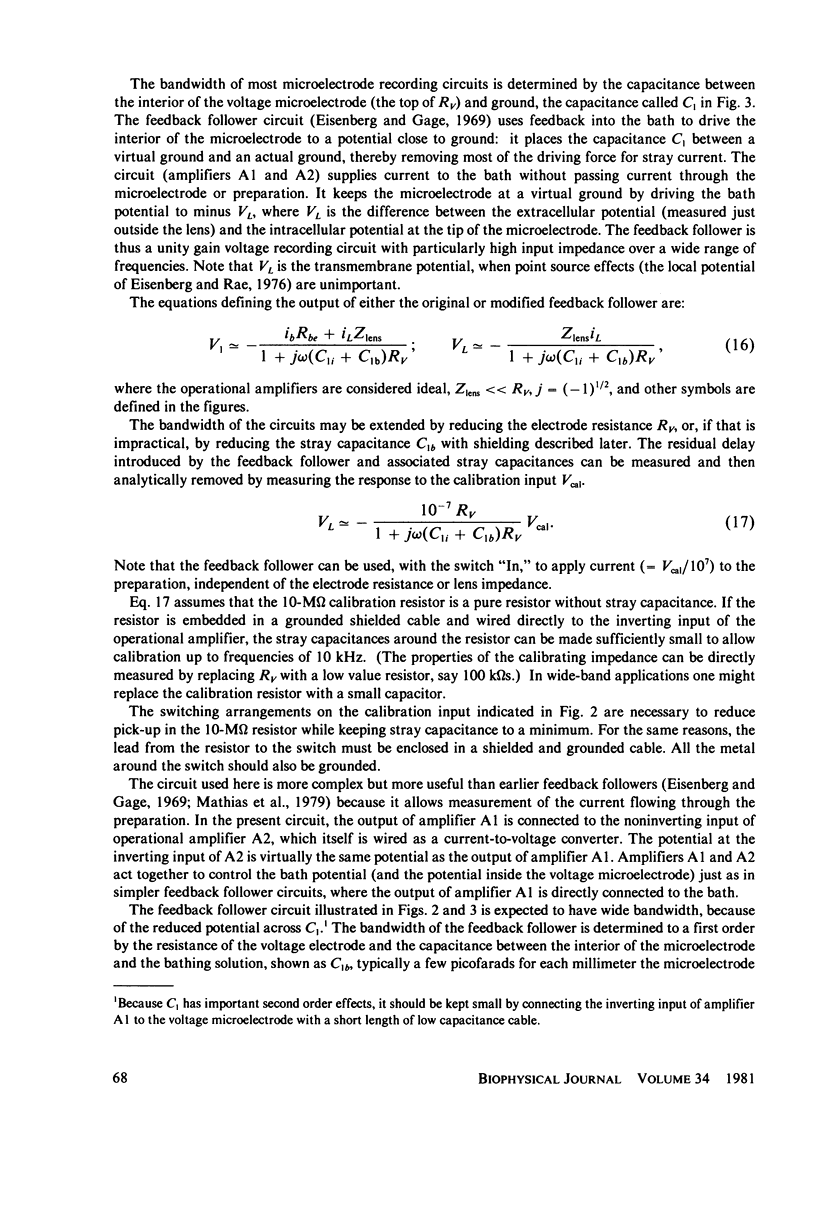
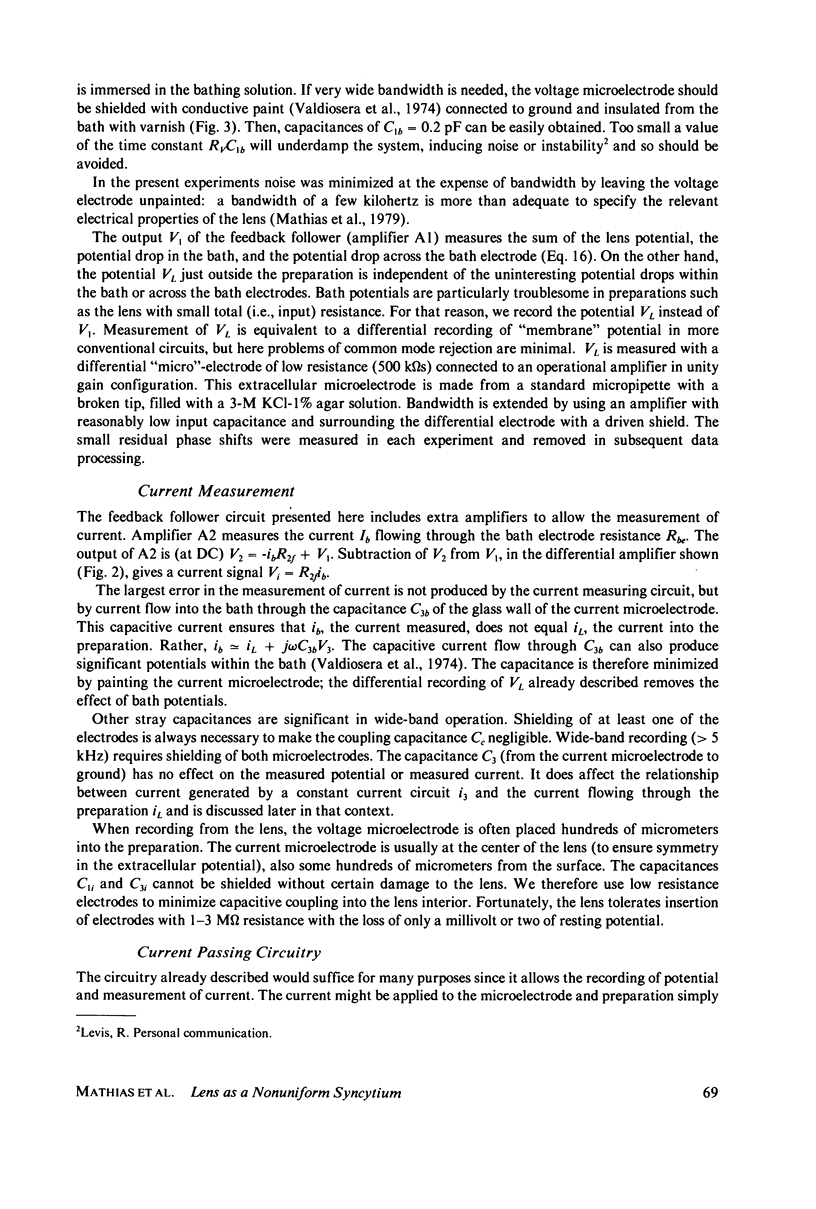
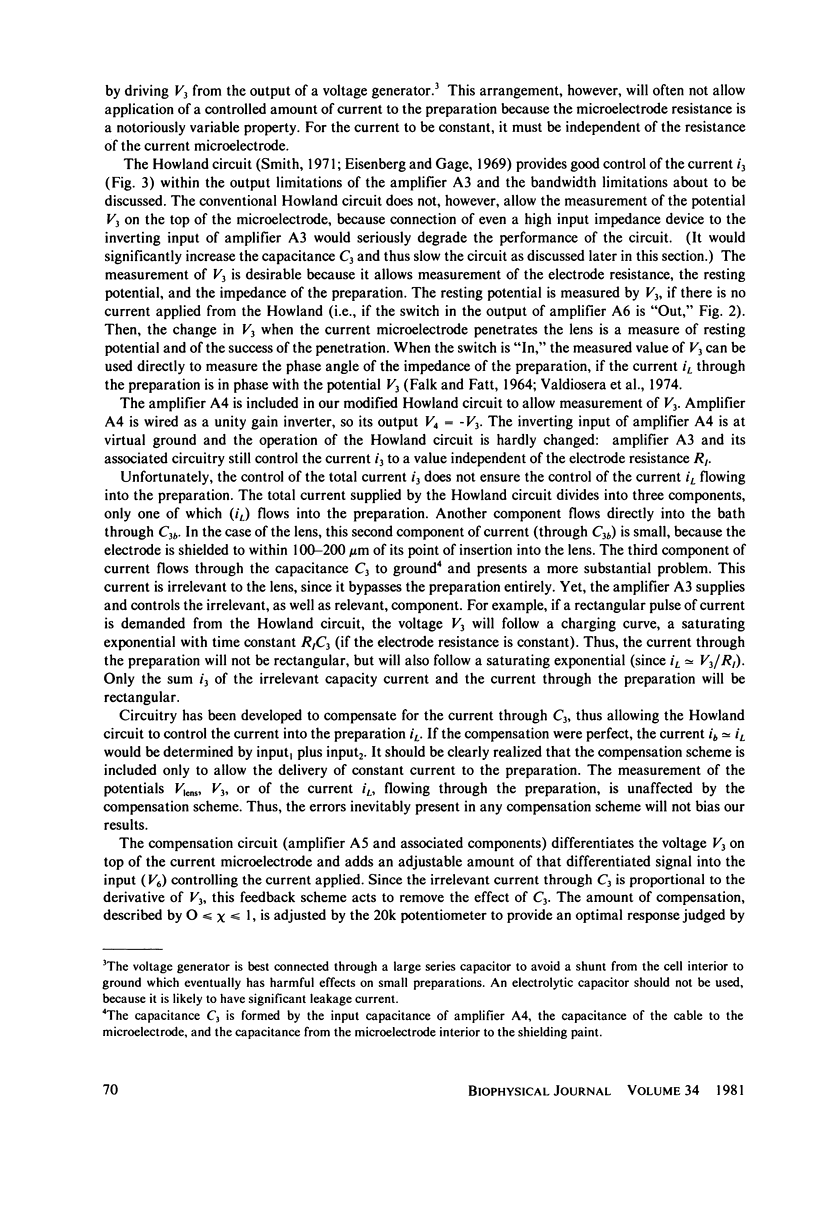
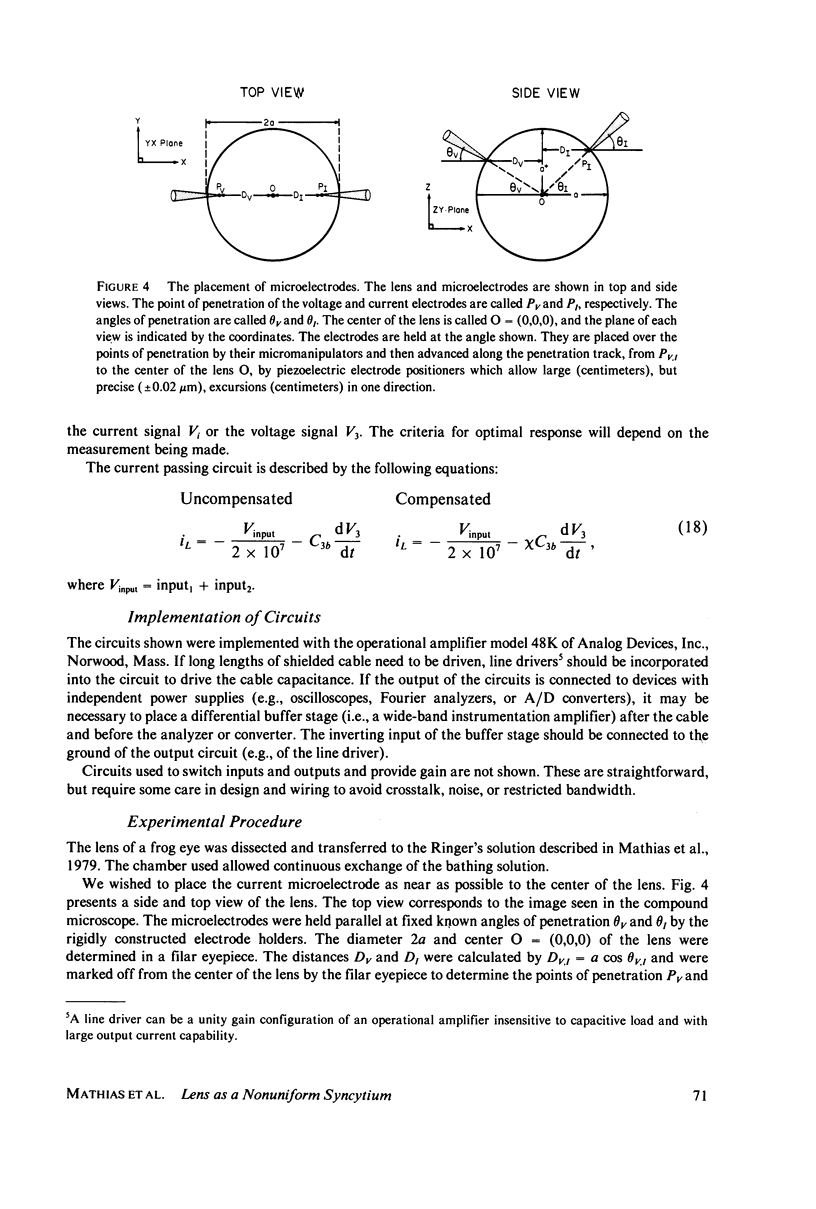
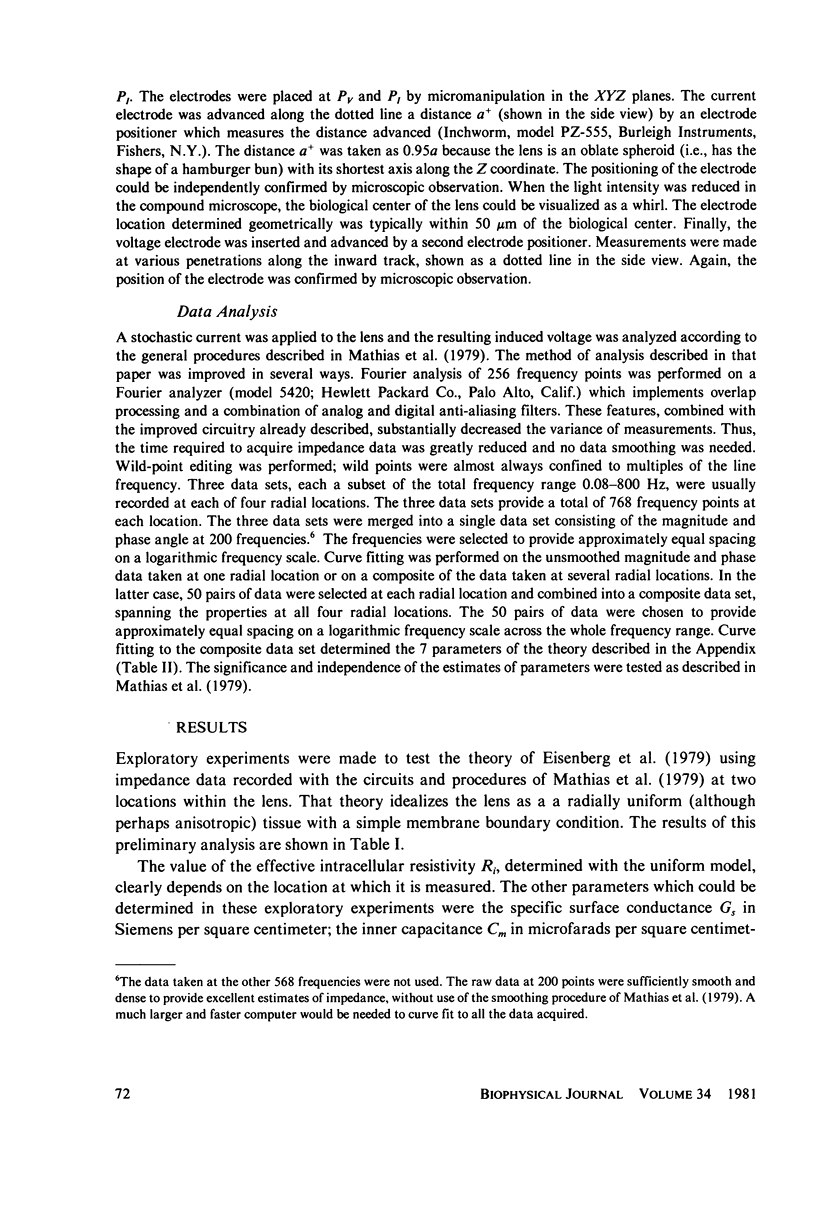
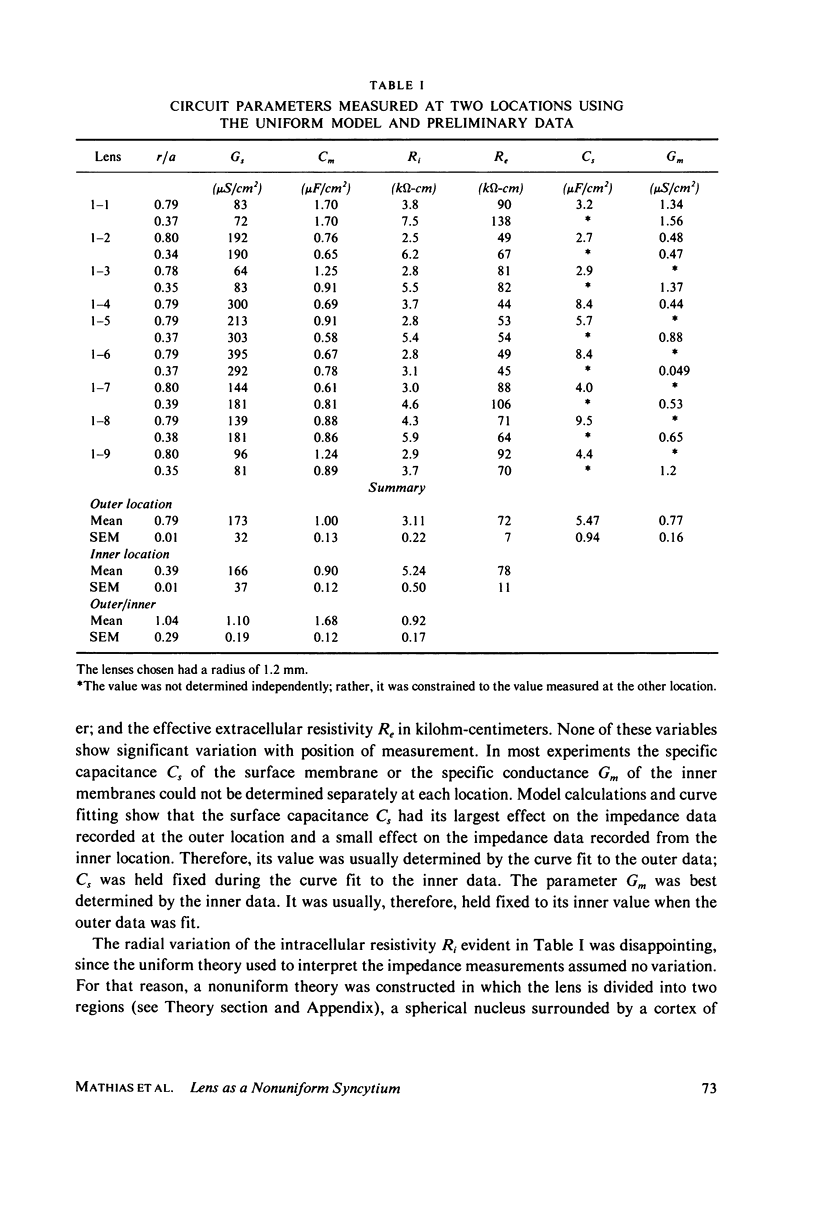
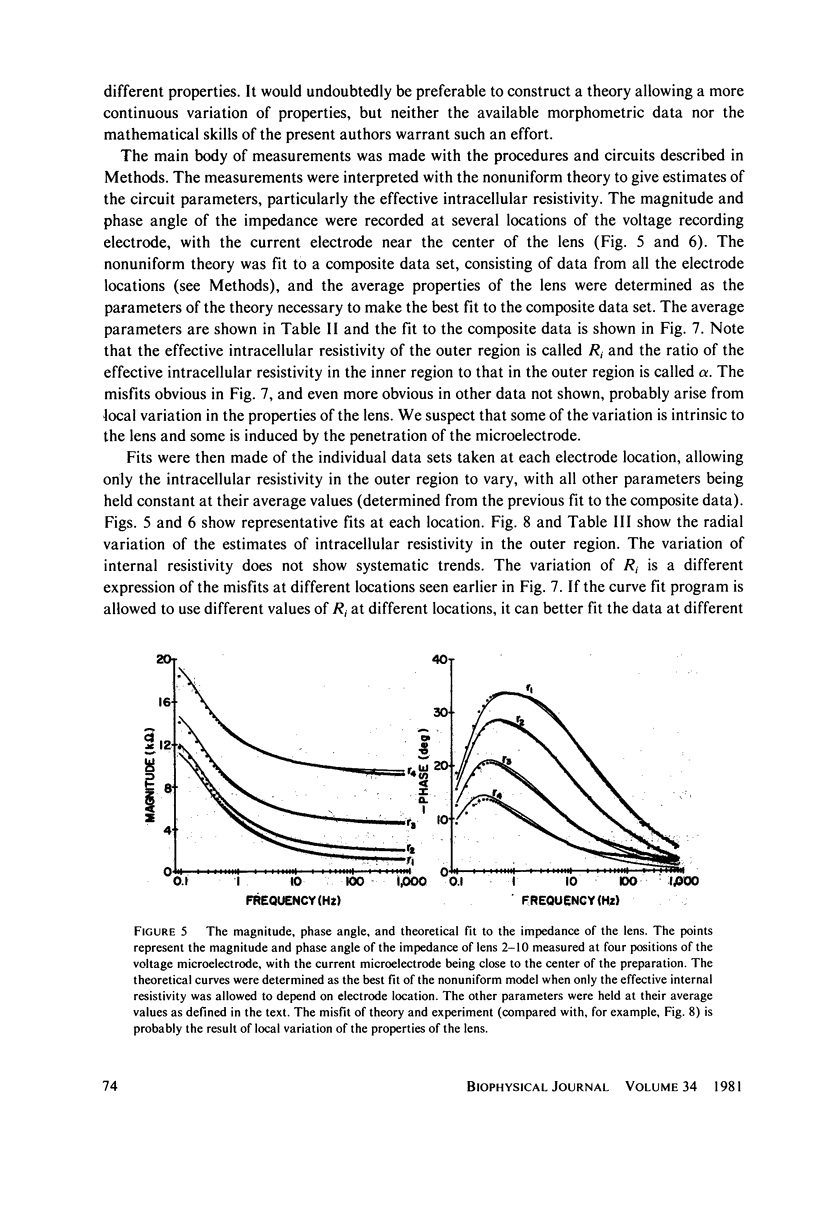
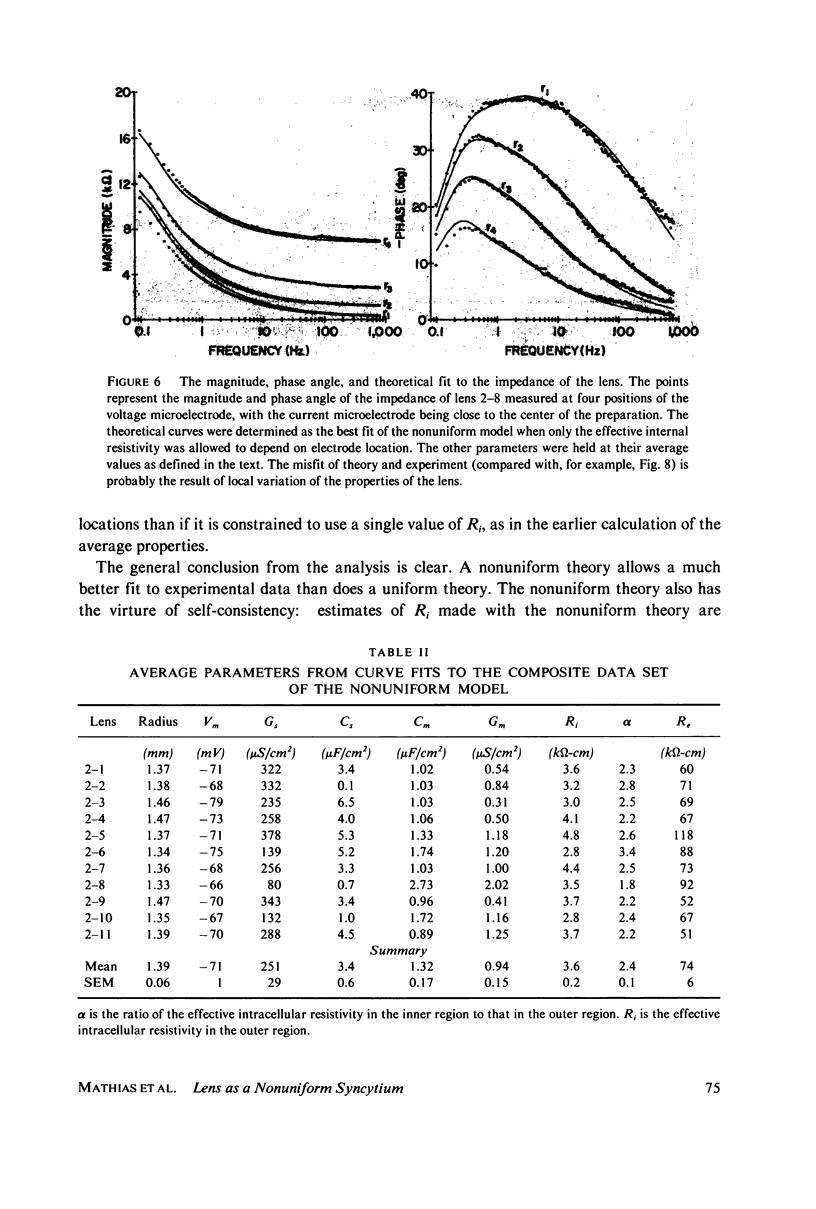
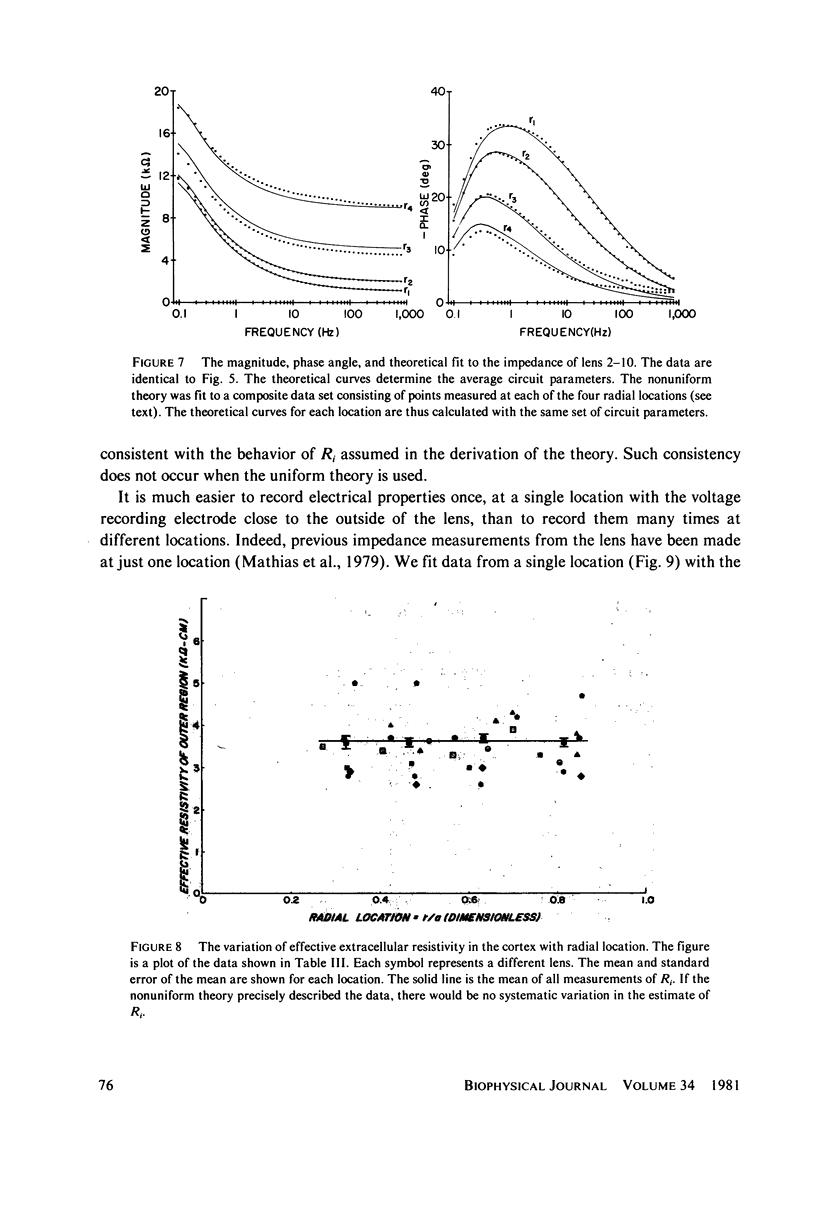
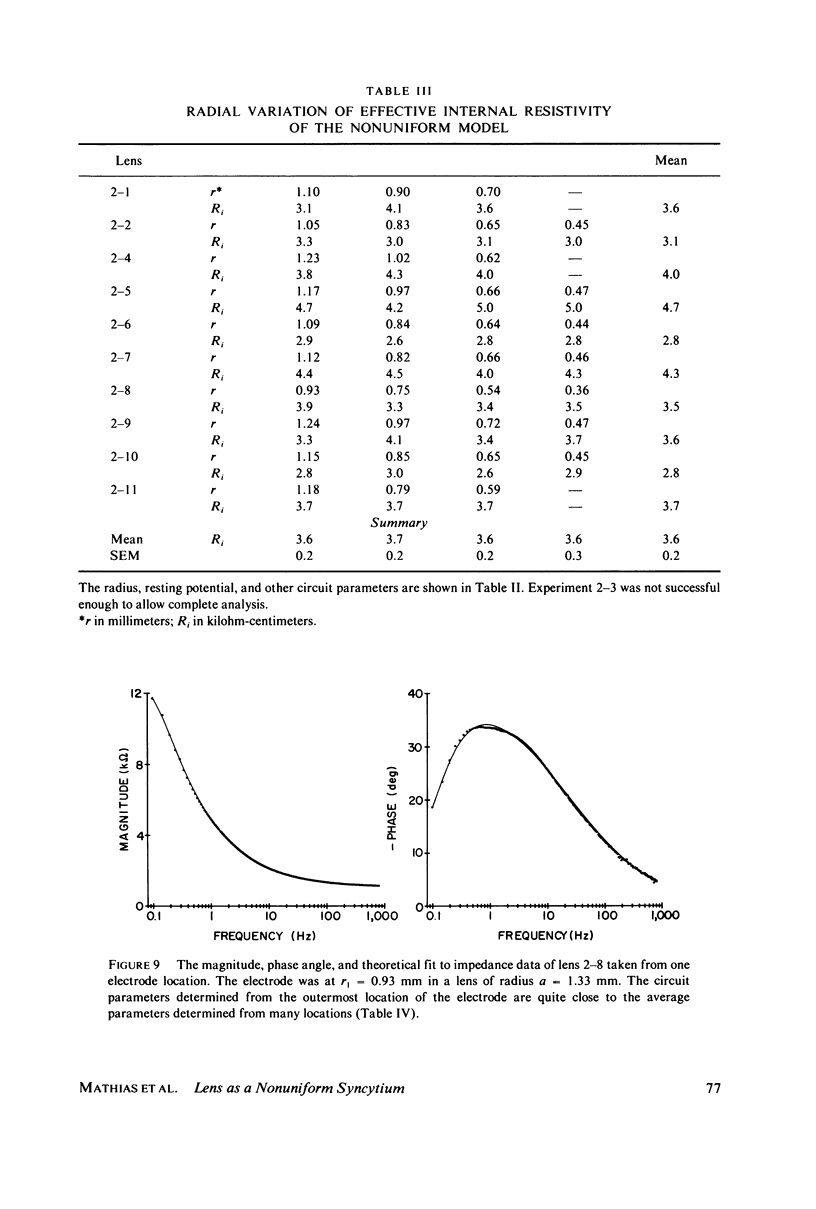
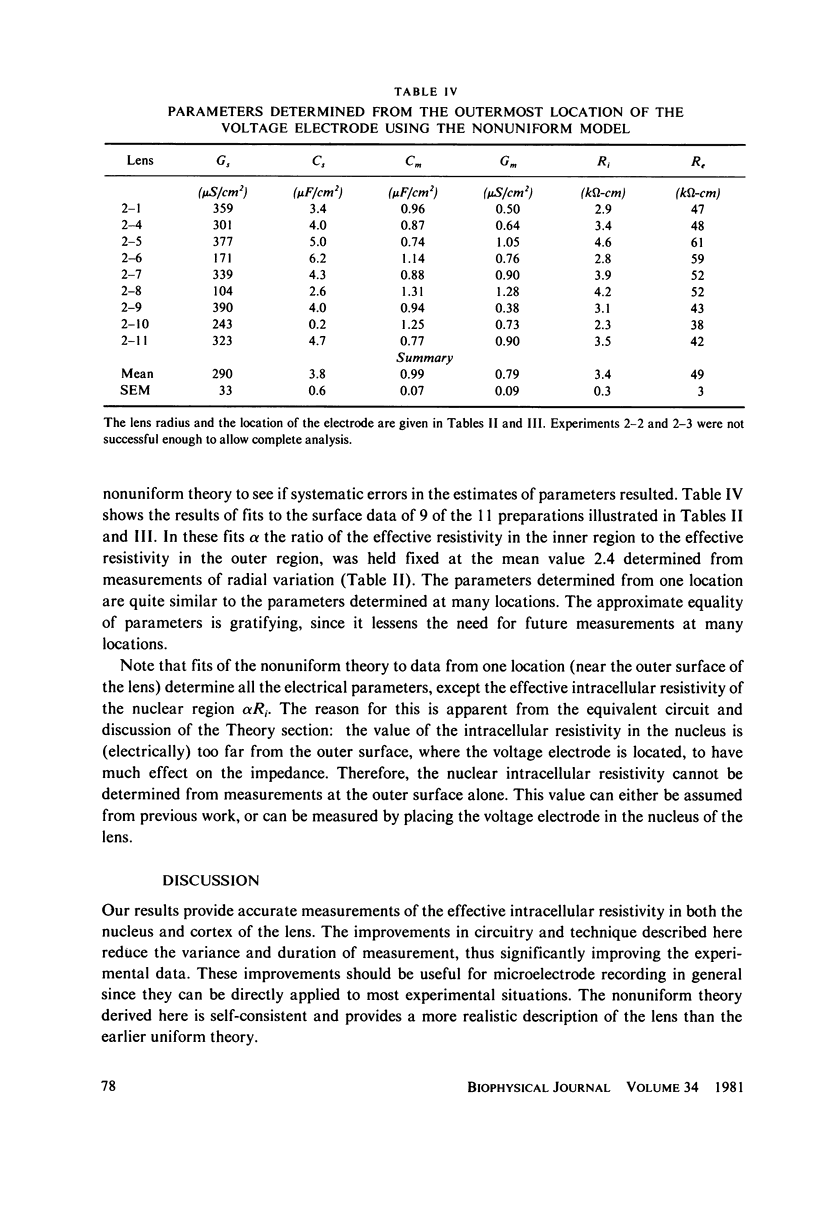
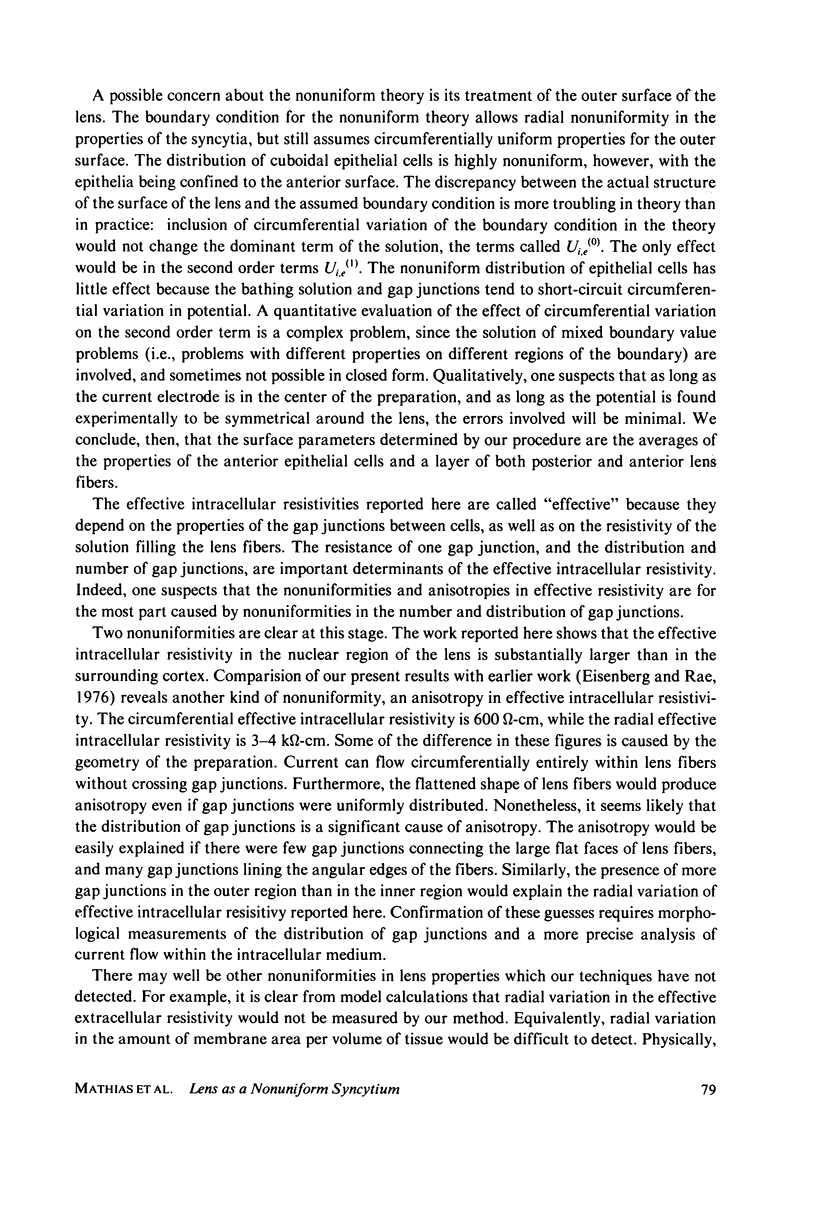
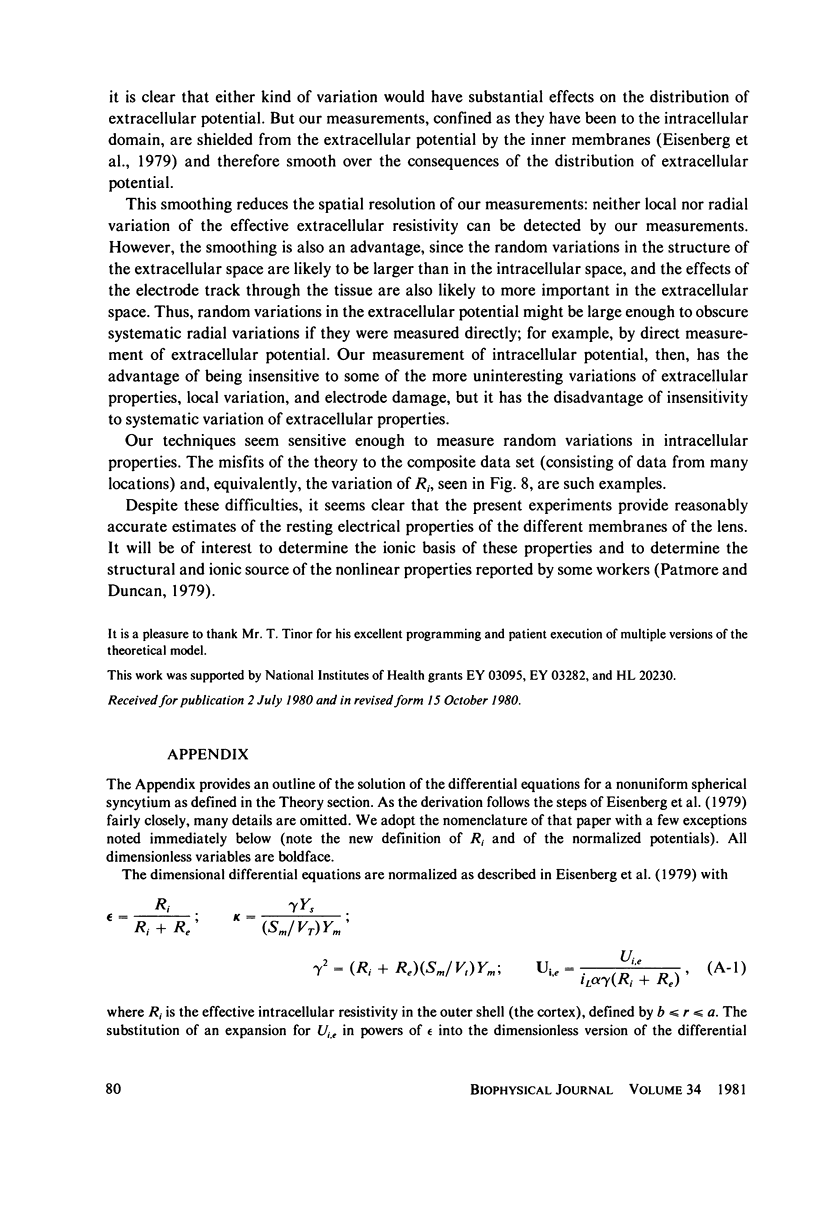
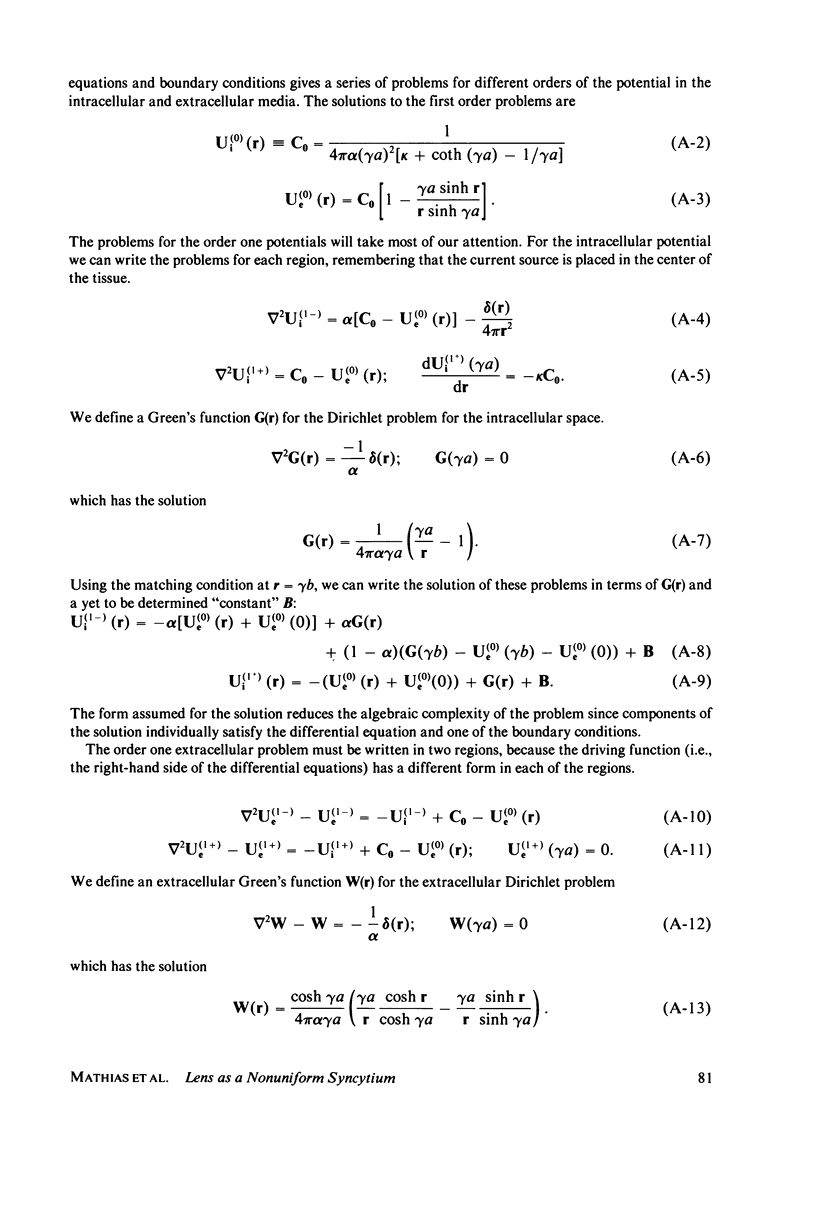
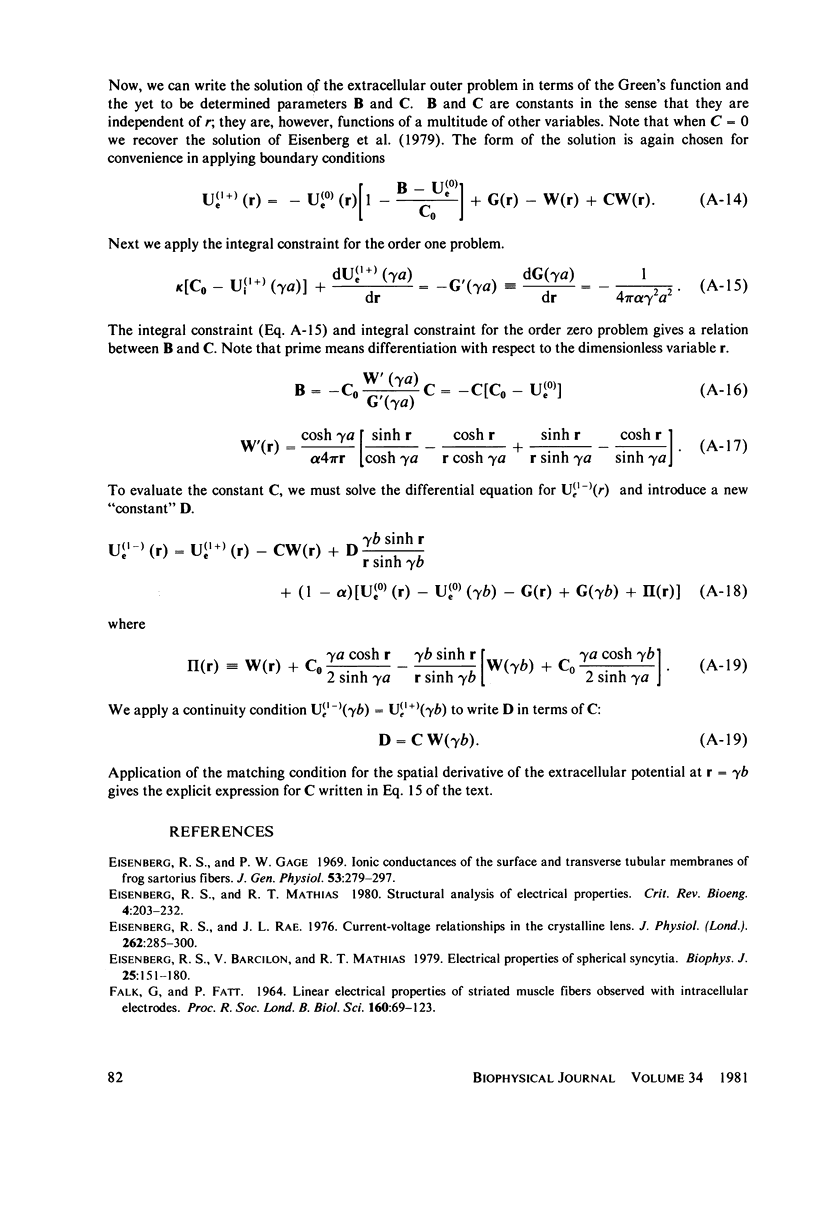
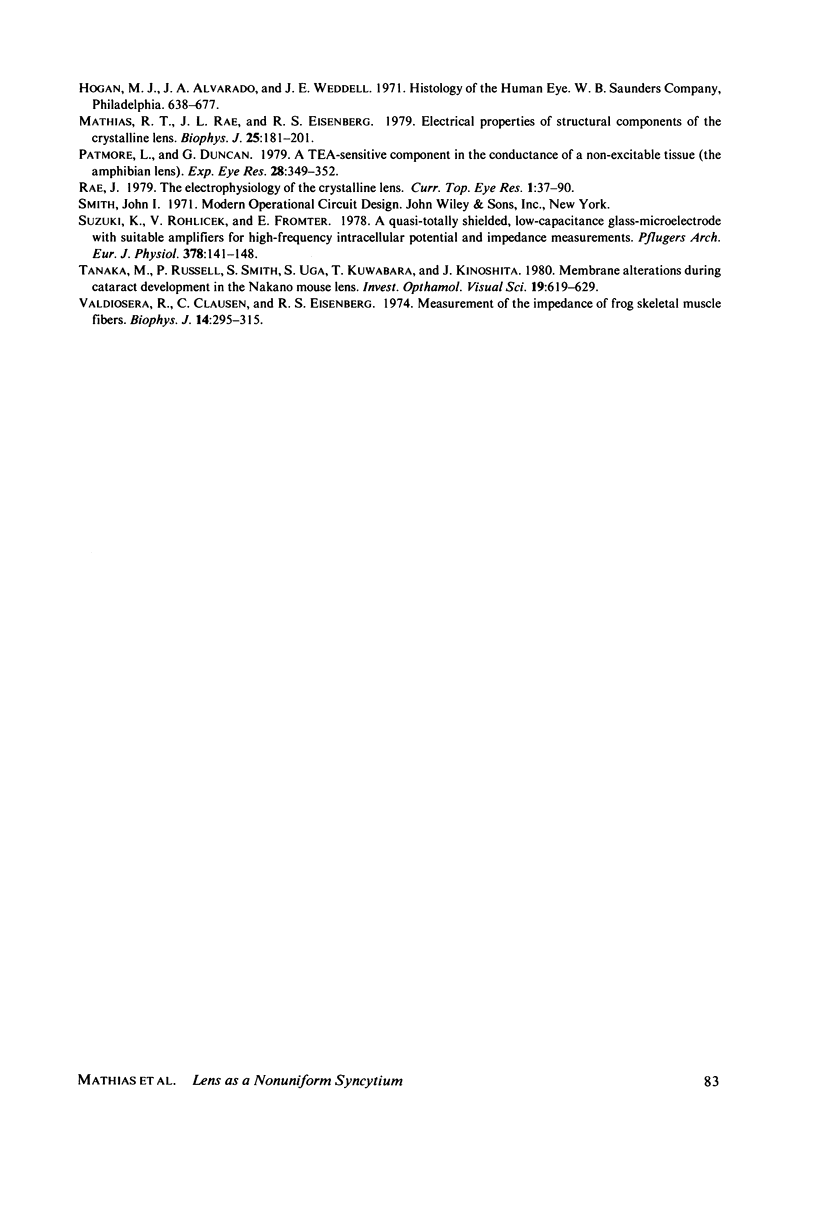
Selected References
These references are in PubMed. This may not be the complete list of references from this article.
- Eisenberg R. S., Barcilon V., Mathias R. T. Electrical properties of spherical syncytia. Biophys J. 1979 Jan;25(1):151–180. doi: 10.1016/S0006-3495(79)85283-2. [DOI] [PMC free article] [PubMed] [Google Scholar]
- Eisenberg R. S., Gage P. W. Ionic conductances of the surface and transverse tubular membranes of frog sartorius fibers. J Gen Physiol. 1969 Mar;53(3):279–297. doi: 10.1085/jgp.53.3.279. [DOI] [PMC free article] [PubMed] [Google Scholar]
- Eisenberg R. S., Mathias R. T. Structural analysis of electrical properties of cells and tissues. Crit Rev Bioeng. 1980;4(3):203–232. [PubMed] [Google Scholar]
- Eisenberg R. S., Rae J. L. Current-voltage relationships in the crystalline lens. J Physiol. 1976 Nov;262(2):285–300. doi: 10.1113/jphysiol.1976.sp011596. [DOI] [PMC free article] [PubMed] [Google Scholar]
- FALK G., FATT P. LINEAR ELECTRICAL PROPERTIES OF STRIATED MUSCLE FIBRES OBSERVED WITH INTRACELLULAR ELECTRODES. Proc R Soc Lond B Biol Sci. 1964 Apr 14;160:69–123. doi: 10.1098/rspb.1964.0030. [DOI] [PubMed] [Google Scholar]
- Mathias R. T., Rae J. L., Eisenberg R. S. Electrical properties of structural components of the crystalline lens. Biophys J. 1979 Jan;25(1):181–201. doi: 10.1016/S0006-3495(79)85284-4. [DOI] [PMC free article] [PubMed] [Google Scholar]
- Patmore L., Duncan G. A TEA-sensitive component in the conductance of a non-excitable tissue (the amphibian lens). Exp Eye Res. 1979 Mar;28(3):349–352. doi: 10.1016/0014-4835(79)90096-4. [DOI] [PubMed] [Google Scholar]
- Rae J. L. The electrophysiology of the crystalline lens. Curr Top Eye Res. 1979;1:37–90. [PubMed] [Google Scholar]
- Suzuki K., Rohlicek V., Frömter E. A quasi-totally shielded, low-capacitance glass-microelectrode with suitable amplifiers for high-frequency intracellular potential and impedance measurements. Pflugers Arch. 1978 Dec 28;378(2):141–148. doi: 10.1007/BF00584447. [DOI] [PubMed] [Google Scholar]
- Tanaka M., Russell P., Smith S., Uga S., Kuwabara T., Kinoshita J. H. Membrane alterations during cataract development in the Nakano mouse lens. Invest Ophthalmol Vis Sci. 1980 Jun;19(6):619–629. [PubMed] [Google Scholar]
- Valdiosera R., Clausen C., Eisenberg R. S. Measurement of the impedance of frog skeletal muscle fibers. Biophys J. 1974 Apr;14(4):295–315. doi: 10.1016/S0006-3495(74)85917-5. [DOI] [PMC free article] [PubMed] [Google Scholar]


